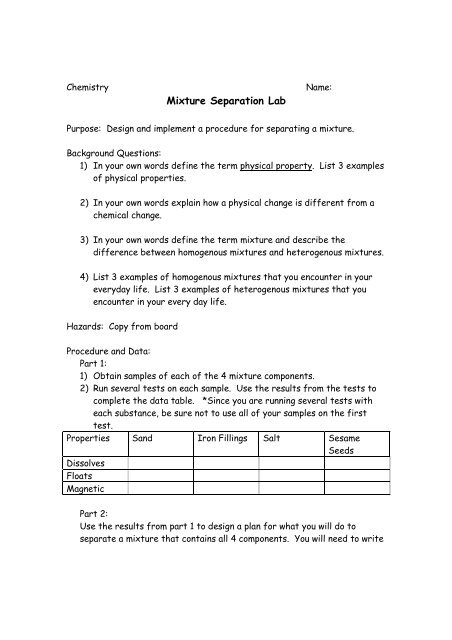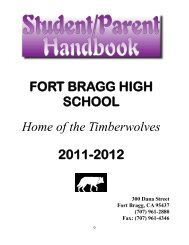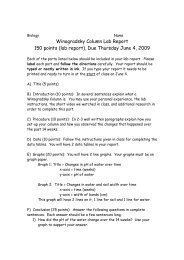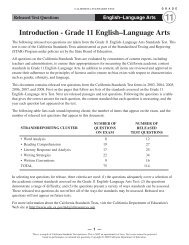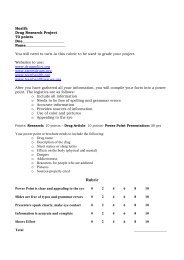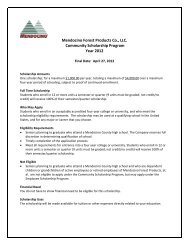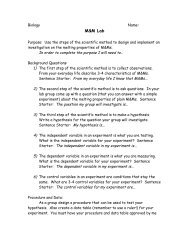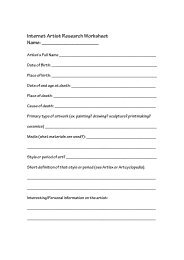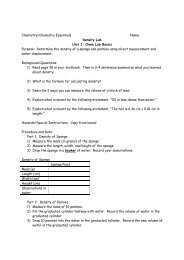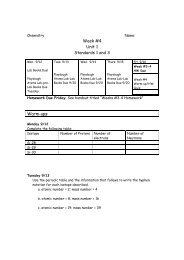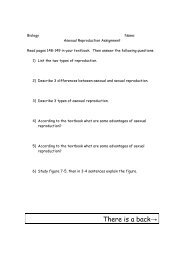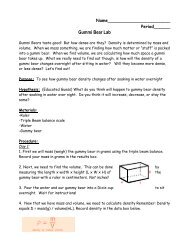Mixture Separation Lab
Mixture Separation Lab
Mixture Separation Lab
You also want an ePaper? Increase the reach of your titles
YUMPU automatically turns print PDFs into web optimized ePapers that Google loves.
Chemistry<strong>Mixture</strong> <strong>Separation</strong> <strong>Lab</strong>Name:Purpose: Design and implement a procedure for separating a mixture.Background Questions:1) In your own words define the term physical property. List 3 examplesof physical properties.2) In your own words explain how a physical change is different from achemical change.3) In your own words define the term mixture and describe thedifference between homogenous mixtures and heterogenous mixtures.4) List 3 examples of homogenous mixtures that you encounter in youreveryday life. List 3 examples of heterogenous mixtures that youencounter in your every day life.Hazards: Copy from boardProcedure and Data:Part 1:1) Obtain samples of each of the 4 mixture components.2) Run several tests on each sample. Use the results from the tests tocomplete the data table. *Since you are running several tests witheach substance, be sure not to use all of your samples on the firsttest.Properties Sand Iron Fillings Salt SesameSeedsDissolvesFloatsMagneticPart 2:Use the results from part 1 to design a plan for what you will do toseparate a mixture that contains all 4 components. You will need to write
down your plan in your lab book AND get my approval prior toimplementing the plan.Analysis/Calculations:On a scale of 1-10 (10 being the best), how successful were you inseparating your mixture? Justify your ratings based on yourobservations. Answer in complete sentences.Questions for Discussion:1) For each of the 4 components describe a specific physical propertythat enabled you to separate the component from the rest of themixture.2) Was the mixture of 4 components an example of a heterogenousmixture or a homogenous mixture? Explain your answers.3) If you could do the lab over, what would you do differently?4) Name 2 tools that were not available that might have made theseparation easier.5) One of the components of the mixture in this experiment is in adifferent physical state at the completion of this experiment than itwas at the start. Which one? How would you convert that componentback to its original state?Don’t forget to write a conclusion. Remember your conclusion should1) Restate the purpose2) Explain (using DATA) how you did or did not meet the purpose3) Discuss sources of experimental error4) Comment on what you learned from doing the lab5) If you were the teacher how would you improve/further this lab?


